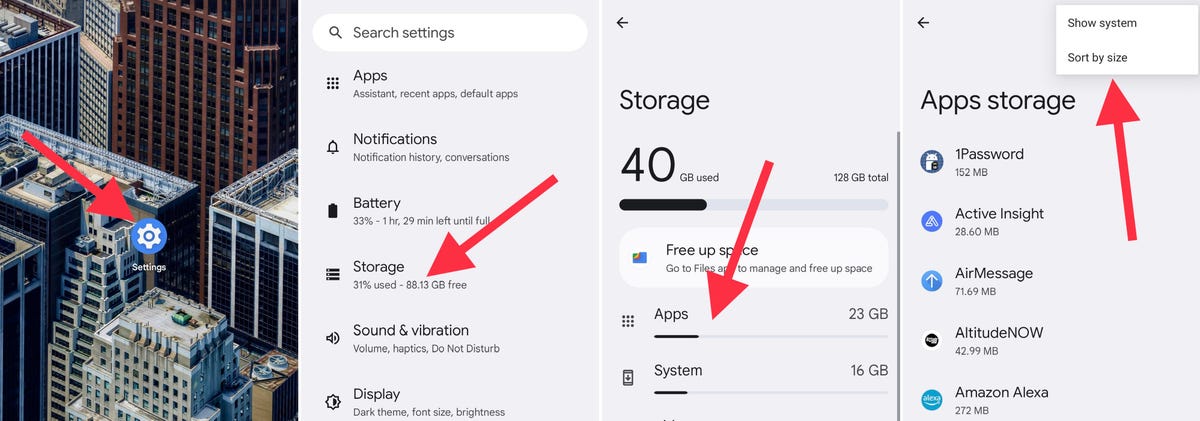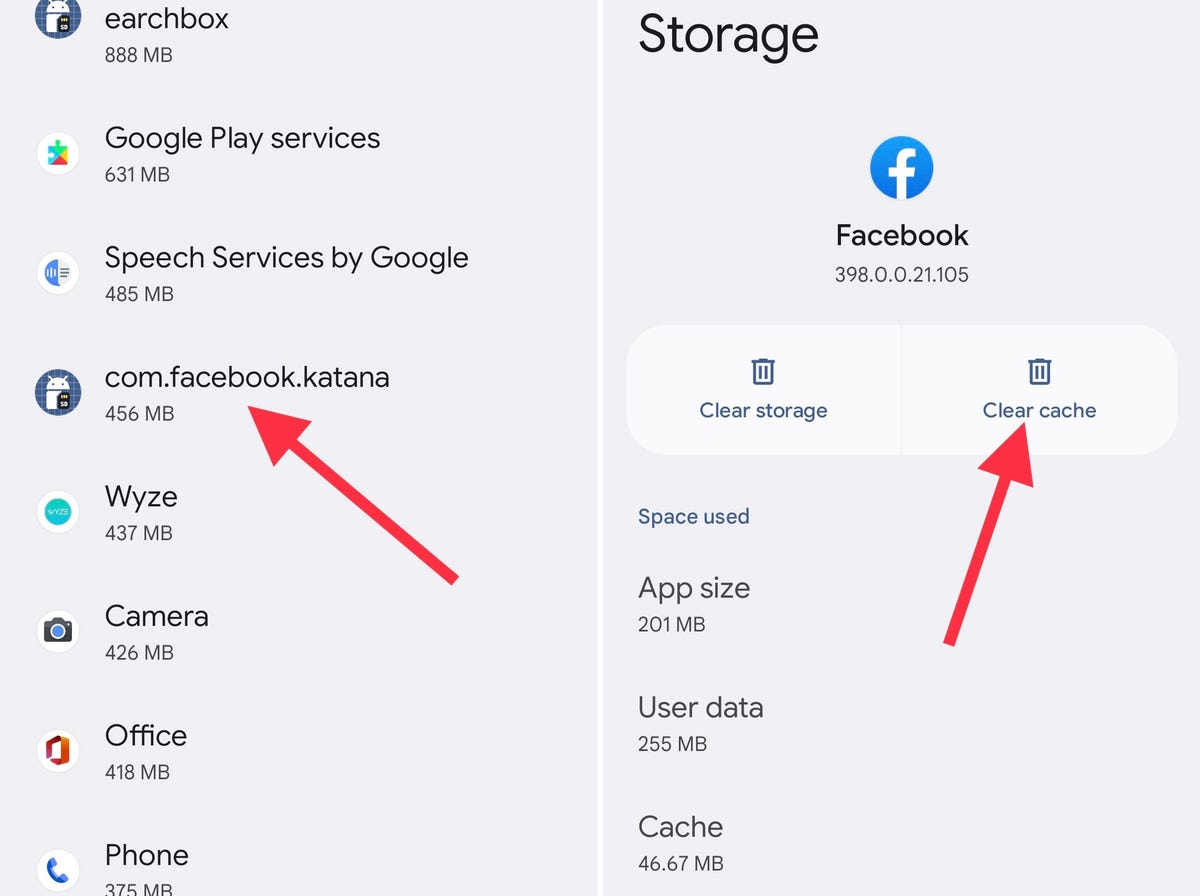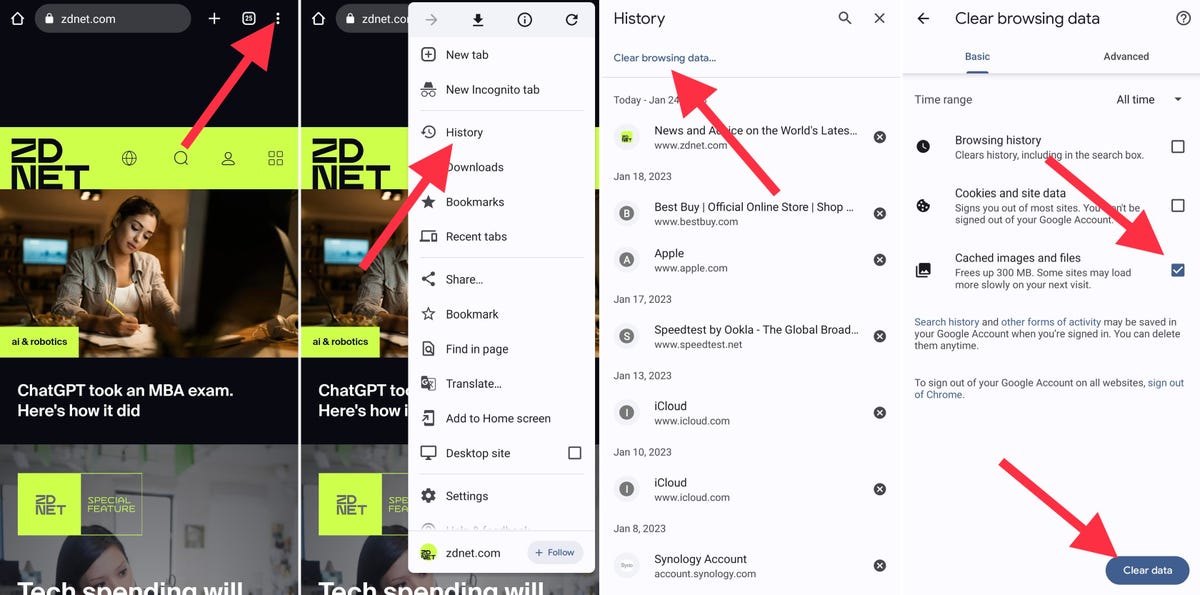If your smartphone or tablet performance is getting slow, some simple fixes can often fix the problem. The simple fact of restarting your device, for example, solves many problems.
Another common way to improve performance, or at least free up extra storage space on an Android smartphone, is to clear cached data. This is data stored in apps and in the Chrome browser, data collected from the websites you visit.
Below you will see the two processes, which are quick to perform. You just have to know where to look, and that’s exactly what we’re going to show you.
As with any tutorial on an Android device, the steps may differ slightly for you from what is described here, due to differences between device manufacturers and software overlays on top of Android. But the gist of the process is there and it should be similar enough to point you in the right direction.
How do I clear an app’s cached data?
Display the list of all applications installed on your smarpthone or tablet
The fastest way to view all apps installed on your Android smartphone or tablet is to open Settings and, in the main list, to go to Storage. On the next screen, find and tap Apps Where Apps. On some smartphones, like the Moto G 5G, it’s not Storage which appears directly from Settings but the list of apps. If you have trouble finding the app list, use the search bar in Settings to find her.
When viewing the list of apps, to more easily see which apps are using the most storage on your device, tap the three-dot icon in the top-right corner and select Sort by size.

Screenshot by Jason Cipriani/ZDNET
Clear an app’s cache
Select an app from the list.
When you open an app, you can see the app’s size, user data (eg preferences), cache size, and total amount of storage it takes up. At the top of the page, you have two options: Clear storage and Empty the cache.
Do not select Erase data, as this will reset the application and you will have to set it up again. On the other hand, you can clear the cache without negative consequences.

Screenshot by Jason Cipriani/ZDNET
Repeat as often as necessary
Keep going through the list, looking at apps that are taking up a lot of space and clearing the cache for each one. Or, if you want to be really careful, you can clear the cache of all apps on your phone. But I recommend you start with the more voracious ones, like the Facebook app as shown here in the screenshots.
How to Clear Chrome Browser Cache
Go to Chrome history settings
Open the Chrome app on your Android phone or tablet, then tap the three-dot menu icon in the top-right corner. Then select Historical then Clear browsing data.

Screenshot by Jason Cipriani/ZDNET
Select the data you want to delete
The next screen displays a list of options; the types of data and the period for which you want to erase them. For each type of data is accompanied by a brief description of its meaning and the impact that its deletion may have.
For example, deleting cookies and site data will sign you out of certain websites. Deleting cached images and files will slow down Chrome the next time it needs to load visuals from a website you visit.
FAQ about data stored in Android smartphones and tablets
What is cached data?
When you clear cached data, whether for an app or for Chrome, you are simply deleting the various files and information that the app has downloaded. For an app like Facebook, the cached data might be profile photos, images, videos, and other similar content that the phone saves to speed up your timeline scrolling on a future visit.
In other words, while files and data contribute to the overall experience, they are not essential and can often become bulky and take up too much storage space.
How often should I clear the cache of my Android device?
It depends ! If you are having a lot of performance issues, you should do this drain among other repairs. Otherwise, why not quarterly or twice a year? It really depends on how well your phone or tablet works.
Do we gain storage space by clearing the cache?
No. In fact, one of the first troubleshooting things I do when I encounter bugs or weird glitches in an app is clearing the cache. Often, the files contained in the cache are corrupted or obsolete: cleaning then solves the problem by forcing the application to rebuild the cache again. Corrupt files are replaced with valid files.
Source: “ZDNet.com”
